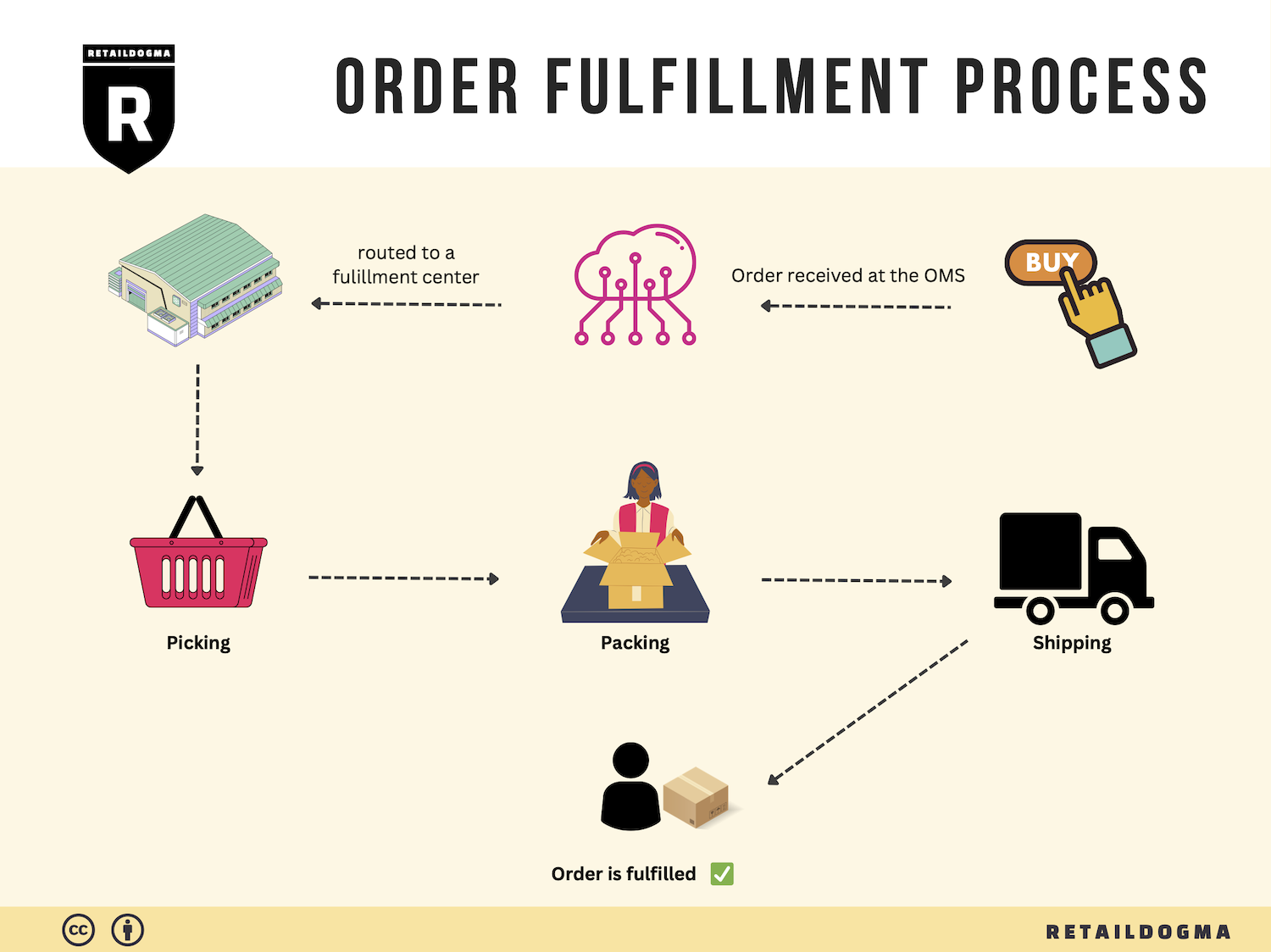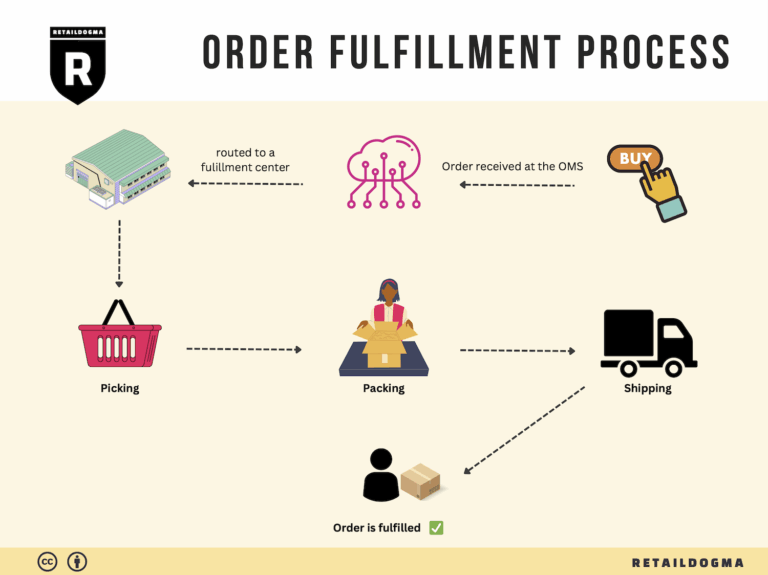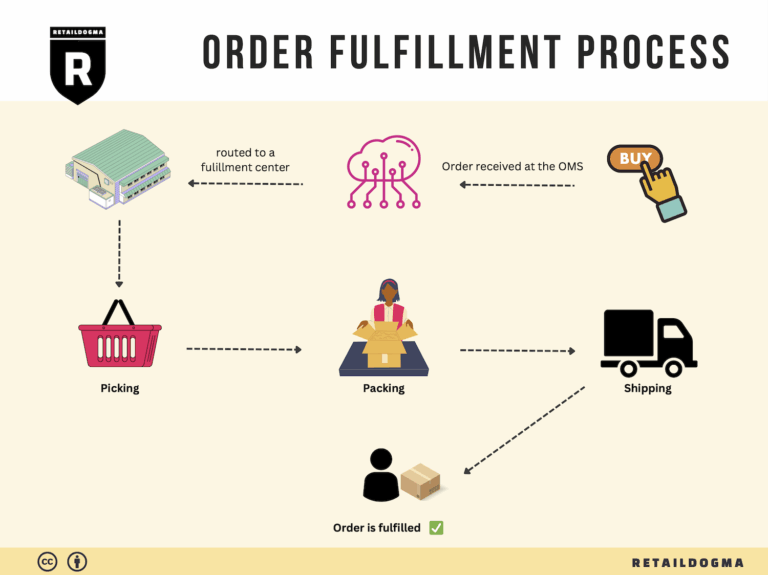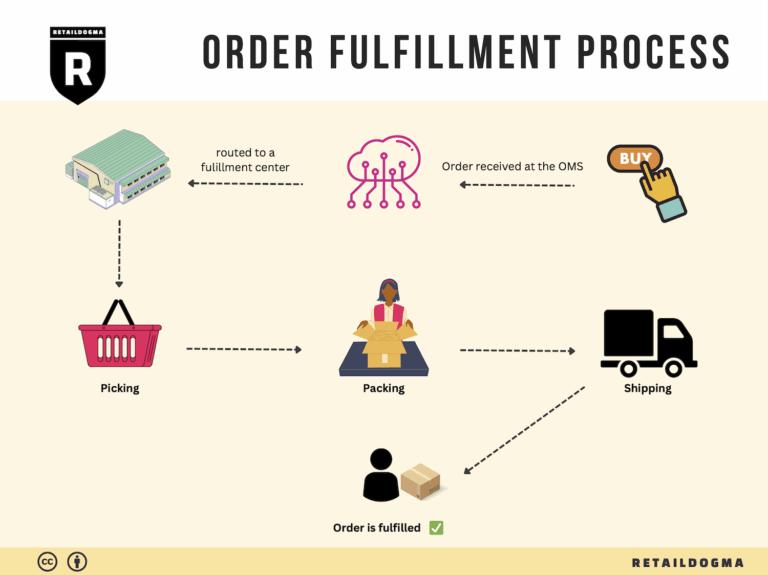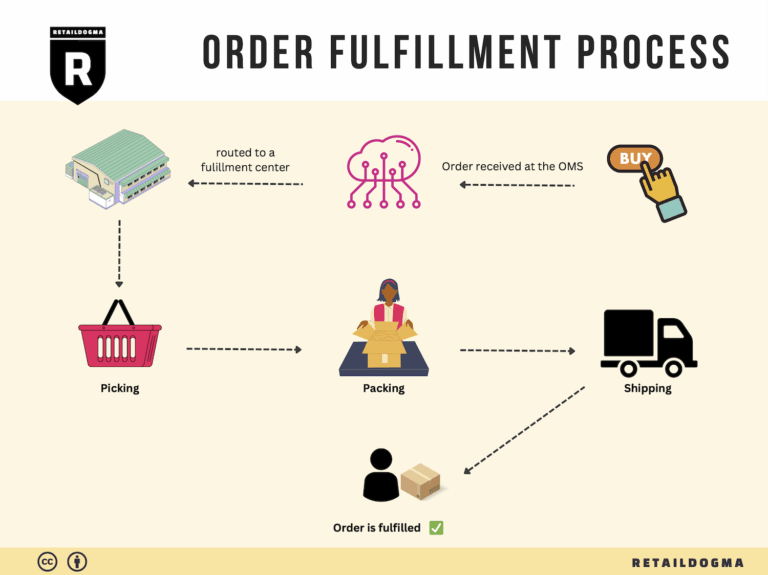How Order Fulfillment Works: A Step-by-Step Guide for Businesses
What is E-commerce Fulfillment? An Introduction for Growing Businesses
Introduction to E-commerce Fulfillment
As your online business begins to flourish, the excitement of growth can quickly turn into a daunting challenge. One of the most common pain points for e-commerce entrepreneurs is the overwhelming task of packing and shipping orders. The process, while essential, can consume valuable time and resources, diverting your focus from what truly matters—growing your brand and delighting your customers. This is where e-commerce fulfillment comes into play.
E-commerce fulfillment refers to the complete process of getting a product from your online store to your customer’s doorstep. This includes managing inventory, processing orders, picking and packing items, and shipping them out. For many growing businesses, the logistics of fulfillment can become complex and cumbersome, especially when trying to scale operations efficiently.
In this guide, we will explore the various models of e-commerce fulfillment that can help streamline your operations. We will delve into Third-Party Logistics (3PL) providers and how they can alleviate the burden of order fulfillment, as well as the Fulfilled by Amazon (FBA) program, which offers a different avenue for sellers on the Amazon marketplace. Understanding these models will empower you to choose the right approach for your business needs.
We will also cover the core services that fulfillment partners typically offer, such as inventory management, order processing, and shipping solutions. Knowing what to expect from a fulfillment partner will help you assess potential collaborators more effectively.
Choosing the right fulfillment partner is critical for your business’s success. We will provide practical tips on what to look for in a partner, including their experience, technology capabilities, and customer service standards. Additionally, we’ll discuss pricing structures to help you evaluate the financial implications of various fulfillment options.
Ultimately, this guide aims to empower your business to make informed decisions about logistics and fulfillment. By understanding the landscape of e-commerce fulfillment, you can streamline your operations, reduce overhead costs, and enhance customer satisfaction—all key components for scaling your business successfully. Let’s embark on this journey to simplify your fulfillment process and unlock your business’s true potential.
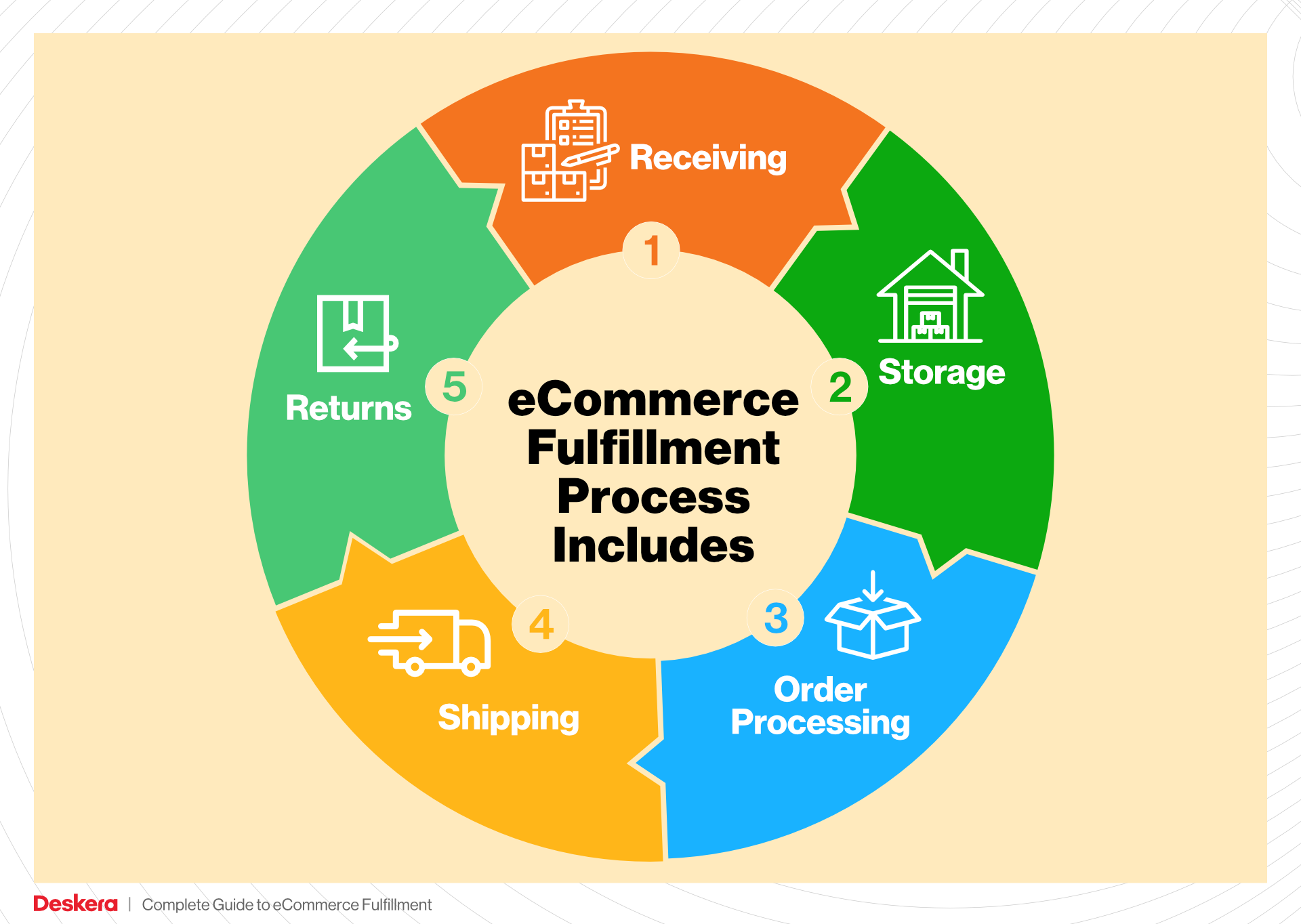
What You’ll Learn In This Guide
- What is E-commerce Fulfillment? An Introduction for Growing Businesses
- The Order Fulfillment Process: From ‘Buy’ Button to Customer’s Door
- Comparing Fulfillment Models: In-House vs. 3PL vs. Dropshipping
- A Deep Dive into Amazon FBA: Pros, Cons, and Who It’s For
- Core Services Offered by Fulfillment Centers
- How to Choose a Fulfillment Partner: A 6-Point Checklist
- Understanding Fulfillment Pricing: A Breakdown of Common Fees
- Frequently Asked Questions (FAQs) about Fulfillment
- Conclusion: Is Outsourcing Fulfillment the Right Move for Your Business?
- Important Disclaimer
The Order Fulfillment Process: From ‘Buy’ Button to Customer’s Door
1. Receiving Inventory
The order fulfillment process begins with receiving inventory, which is the foundation of your logistics operation. When goods arrive at your fulfillment center, they must be accurately checked against purchase orders to ensure that the correct items and quantities have been delivered. This step is crucial for maintaining accurate stock levels and preventing discrepancies that could lead to fulfillment errors down the line.
During this stage, each product is assigned a unique Stock Keeping Unit (SKU) for efficient tracking and management. SKUs help in identifying products quickly and are essential for inventory management systems. Properly managing incoming inventory not only ensures that your stock is accurate but also sets the stage for efficient picking and packing processes.
2. Warehouse Storage
Once inventory is received and checked, the next step is warehouse storage. This involves strategically placing products in designated areas within the fulfillment center. Effective storage solutions are vital for optimizing space and ensuring that items can be accessed quickly when orders come in.
Using methods like zone storage or bin shelving can enhance efficiency. For instance, frequently ordered items can be stored closer to the packing area to reduce the time taken during the picking process. Additionally, maintaining a systematic storage layout helps in inventory accuracy and can significantly reduce the time spent locating products. This step is not only about storage but also about maximizing operational efficiency and preparing for swift order processing.
3. Order Picking
The order picking process is where the action begins. When a customer places an order, the fulfillment center must retrieve the ordered items from their storage locations. This is typically done using pick lists, which are documents that outline the items and quantities needed for each order.
Efficient picking is crucial for maintaining quick turnaround times and customer satisfaction. Techniques such as batch picking, where multiple orders are picked simultaneously, can enhance productivity. Additionally, employing technology like barcode scanners can minimize human error and speed up the process. This step is fundamental because the accuracy and speed of order picking directly impact your ability to fulfill customer expectations.

4. Order Packing
After items have been picked, they move to the packing stage. This is where the products are carefully packaged for shipping. Proper packing is essential not only for ensuring that items arrive safely at their destination but also for enhancing the customer experience. Well-packaged products reflect professionalism and care, which can positively influence customer loyalty.
During packing, it’s important to consider factors such as packaging materials, branding, and shipping labels. Using branded packaging can help reinforce your brand identity, while choosing the right materials protects the items from damage during transit. Moreover, including packing slips and return instructions can streamline the post-purchase experience for customers. The packing stage is critical for ensuring that orders are shipped correctly and efficiently.
5. Shipping & Delivery
The final step in the order fulfillment process is shipping and delivery. Once orders are packed, they are ready to be shipped to customers. This stage involves selecting the appropriate shipping carrier and method based on factors such as cost, delivery speed, and destination.
Utilizing a reliable logistics partner can enhance shipping efficiency. Many fulfillment centers, like those in Dallas, offer same-day shipping services, which can be a significant competitive advantage. Efficient shipping not only affects the speed at which customers receive their products but also impacts your shipping costs. Tracking systems should be integrated to provide real-time updates to customers about their order status, enhancing their overall experience. This stage is crucial because it completes the fulfillment cycle, ensuring that products reach customers promptly and in good condition.
By understanding and optimizing each of these steps—receiving inventory, warehouse storage, order picking, order packing, and shipping & delivery—e-commerce businesses can streamline their fulfillment processes, improve operational efficiency, and enhance customer satisfaction.
Comparing Fulfillment Models: In-House vs. 3PL vs. Dropshipping
Fulfillment Model Comparison
| Model | Who Handles Inventory | Best For (Business Stage) | Key Advantage | Key Disadvantage |
|---|---|---|---|---|
| In-House Fulfillment | The business itself | Established businesses with stable sales | Complete control over inventory and process | High overhead costs and resource demands |
| Third-Party Logistics (3PL) | The 3PL provider | Startups and scaling businesses | Cost-effective, scalable solutions | Less control over inventory and processes |
| Dropshipping | The supplier/vendor | New businesses or niche markets | Low startup costs, no inventory risk | Lower profit margins and reliance on supplier |
In-House Fulfillment
In-house fulfillment is a model where businesses manage all aspects of their logistics, including inventory storage, order processing, packaging, and shipping. This approach provides complete control over the fulfillment process, allowing businesses to tailor their operations to meet specific customer needs. It is ideal for established companies that have a stable sales volume and can justify the investment in warehousing, staff, and logistics technology. The main advantage of in-house fulfillment is that businesses can maintain high standards for quality control, packaging, and customer service. However, this model comes with significant overhead costs, including rent for storage space, salaries for fulfillment staff, and investments in logistics infrastructure. Additionally, managing fulfillment can divert focus from core business activities, potentially stunting growth.
Third-Party Logistics (3PL)
Third-party logistics (3PL) providers offer comprehensive logistics services, handling inventory management, warehousing, order fulfillment, and shipping for e-commerce businesses. This model is particularly beneficial for startups and companies looking to scale quickly without the burdens of managing logistics internally. Partnering with a 3PL allows businesses to leverage the provider’s expertise, technology, and infrastructure, which can lead to cost savings and enhanced efficiency. For instance, a 3PL like Selery in Dallas can offer same-day shipping from strategically located warehouses, reducing delivery times significantly. However, the trade-off is that businesses lose some degree of control over their inventory and fulfillment processes. Communication and coordination become crucial, as any errors on the 3PL’s part can directly affect customer satisfaction.
Dropshipping
Dropshipping is a fulfillment method where retailers sell products without holding any inventory. Instead, when a retailer sells a product, they purchase the item from a third-party supplier who then ships it directly to the customer. This model is particularly attractive for new entrepreneurs or those targeting niche markets, as it requires minimal upfront investment and eliminates the risk of unsold inventory. With dropshipping, businesses can offer a wide range of products without the costs associated with warehousing and fulfillment. However, dropshipping typically comes with lower profit margins due to reliance on suppliers and can lead to longer shipping times, which may affect customer satisfaction. Additionally, since the retailer has less control over the fulfillment process, issues such as stock shortages or shipping delays can arise, making it essential to partner with reliable suppliers.
Conclusion
Choosing the right fulfillment model is crucial for e-commerce businesses, as it can significantly impact operational efficiency, customer satisfaction, and ultimately, profitability. In-house fulfillment offers control but can strain resources, while 3PL provides scalability and cost efficiency but requires careful management of partnerships. Dropshipping presents a low-risk entry point for new businesses but may compromise profit margins and control. Understanding the nuances of each model will enable e-commerce entrepreneurs to make informed decisions that align with their business goals and market demands.
A Deep Dive into Amazon FBA: Pros, Cons, and Who It’s For
Understanding Fulfillment by Amazon (FBA)
Fulfillment by Amazon (FBA) is a service offered by Amazon that allows e-commerce businesses to store their products in Amazon’s fulfillment centers. Amazon takes care of storage, packaging, shipping, customer service, and returns. This service enables sellers to leverage Amazon’s vast logistics network to reach millions of customers quickly and efficiently.
How FBA Works
- Sign Up: To use FBA, sellers first need to create an Amazon Seller account and sign up for FBA.
- Prepare Products: Sellers must prepare their products according to Amazon’s guidelines, which include labeling and packaging requirements.
- Ship to Amazon: Once products are prepared, sellers ship their inventory to Amazon’s fulfillment centers. Amazon provides shipping plans to facilitate this process.
- Storage: The products are stored in Amazon’s warehouses until they are sold.
- Order Fulfillment: When a customer places an order, Amazon picks, packs, and ships the product on behalf of the seller.
- Customer Service: Amazon handles all customer service inquiries and returns, allowing sellers to focus on their business operations.
Pros of Using FBA
1. Prime Eligibility
One of the most significant advantages of FBA is that products fulfilled by Amazon are eligible for Amazon Prime. This is a critical selling point as Prime members are more likely to purchase products with the Prime badge due to the promise of fast, free shipping.
2. Increased Customer Trust
Amazon is a well-established brand, and customers inherently trust it. By using FBA, sellers benefit from Amazon’s reputation, which can lead to higher conversion rates. Customers are more likely to buy from sellers using FBA because they know they’ll receive reliable service.
3. Multi-Channel Fulfillment
FBA allows sellers to fulfill orders from various sales channels, not just Amazon. This means that if a seller also sells on their own website or other marketplaces, they can use FBA to handle those orders, centralizing their logistics and reducing overhead.
4. Scalable Operations
FBA enables sellers to scale their operations without worrying about warehousing, staffing, and logistics. As sales increase, sellers can send more inventory to Amazon without having to invest in their own fulfillment infrastructure.
5. Time Savings
By outsourcing fulfillment to Amazon, sellers can save significant time. This allows them to focus on other critical aspects of their business, such as marketing, product development, and customer engagement.
Cons of Using FBA
1. High Fees
While FBA provides numerous advantages, it comes at a cost. Amazon charges storage fees for the space your products occupy in their warehouses and fulfillment fees for each order processed. These fees can quickly add up, especially for low-margin products.
2. Strict Inventory Rules
Sellers must adhere to Amazon’s strict inventory management guidelines. This includes requirements for labeling, packaging, and product condition. Non-compliance can lead to additional fees or even account suspension.
3. Commingling Risks
FBA operates on a commingling model, meaning your inventory could be mixed with other sellers’ products. While this can streamline fulfillment, it also poses risks. If a customer receives a defective product from another seller, it could negatively impact your seller rating.
4. Limited Control over Fulfillment
While Amazon handles fulfillment, it also means sellers have limited control over the shipping process. This can lead to inconsistencies in packaging and shipping times, which may affect customer satisfaction.
5. Inventory Management Challenges
Managing inventory levels can be complex with FBA. Sellers must monitor stock levels closely to avoid running out of inventory or incurring long-term storage fees for unsold products.
Who is FBA Best For?
FBA is particularly beneficial for:
- Small to Medium-Sized Businesses: Businesses looking to scale without investing heavily in logistics can benefit greatly from FBA.
- Sellers of High-Demand Products: If your products are popular and sell quickly, the efficiencies of FBA can lead to significant profit margins.
- Entrepreneurs Focused on Growth: Those who want to focus on marketing and sales rather than logistics will find FBA a valuable partner.
- Multi-Channel Sellers: Businesses selling across multiple platforms can streamline their operations by using FBA for all order fulfillment.
In conclusion, Fulfillment by Amazon offers a range of advantages that can significantly enhance the operational efficiency of e-commerce businesses. However, potential sellers must weigh these benefits against the associated costs and challenges. By understanding how FBA works and evaluating whether it aligns with their business goals, sellers can make informed decisions that support their growth and success in the competitive e-commerce landscape.
Core Services Offered by Fulfillment Centers
Inventory Management & Warehousing
Inventory management and warehousing are foundational services provided by fulfillment centers. This involves the systematic tracking and storing of products to ensure that e-commerce businesses maintain optimal stock levels and can fulfill orders efficiently.
What It Is: Fulfillment centers utilize advanced inventory management systems to monitor stock levels in real-time. This includes receiving products, categorizing them, and storing them in designated areas within the warehouse. The systems often integrate with e-commerce platforms, providing seamless updates on inventory availability.
Benefits to E-commerce Businesses: By outsourcing inventory management and warehousing, businesses can significantly reduce overhead costs associated with maintaining their own storage facilities. Additionally, fulfillment centers often employ sophisticated technology that enhances accuracy in inventory counts, thereby minimizing stockouts and overstock situations. This leads to improved customer satisfaction as orders can be fulfilled promptly, which is essential in today’s competitive e-commerce landscape.
Pick and Pack Services
Pick and pack services are crucial for e-commerce operations, as they directly impact the speed and accuracy of order fulfillment.
What It Is: This service involves selecting the ordered items from the warehouse (picking) and packaging them appropriately for shipment (packing). Fulfillment centers employ trained staff who use efficient picking methods, such as batch picking or wave picking, to streamline the process.
Benefits to E-commerce Businesses: Fast and accurate pick and pack services can drastically reduce the time it takes to fulfill orders, which is a significant competitive advantage. Customers today expect quick delivery, and fulfillment centers that offer same-day or next-day shipping can help businesses meet these expectations. Additionally, professional packing ensures that products arrive in excellent condition, which helps maintain brand reputation and customer loyalty.
Kitting and Assembly
Kitting and assembly services are particularly beneficial for businesses that sell complex products or bundles.
What It Is: Kitting involves assembling multiple items into a single package or kit, which can be particularly useful for subscription services or product bundles. This service may also include custom assembly of products that require configuration before they can be shipped to customers.
Benefits to E-commerce Businesses: Utilizing kitting and assembly services allows businesses to offer unique product combinations that enhance the customer experience. It can also simplify the fulfillment process by reducing the number of individual SKUs that need to be managed. By outsourcing this process, businesses can focus on product development and marketing while ensuring that their offerings are packaged efficiently for shipping. This not only saves time but also optimizes storage space within the warehouse, as kits can be pre-assembled and ready for immediate shipment.
Returns Management (Reverse Logistics)
Returns management, or reverse logistics, is an often-overlooked but essential service provided by fulfillment centers.
What It Is: This service encompasses the processes involved in handling returned products, from receiving the returns to restocking or disposing of items. Fulfillment centers typically have dedicated teams to manage returns efficiently, ensuring that the products are inspected, processed, and accounted for in the inventory system.
Benefits to E-commerce Businesses: A robust returns management system can significantly enhance customer satisfaction. Efficient handling of returns not only streamlines the process for customers but also minimizes the potential loss of revenue for businesses. By quickly processing returns, businesses can restock items and make them available for resale faster, thus reducing inventory loss. Moreover, a clear and customer-friendly return policy enhances brand trust, which is crucial for repeat business. In an era where customer experience can make or break a brand, efficient returns management is a key differentiator.
Conclusion
In summary, the core services offered by fulfillment centers—inventory management and warehousing, pick and pack services, kitting and assembly, and returns management—play a critical role in the success of e-commerce businesses. By leveraging these services, companies can enhance operational efficiency, improve customer satisfaction, and ultimately drive growth. As e-commerce continues to evolve, partnering with a reliable fulfillment center can provide businesses with the competitive edge they need to thrive in a crowded marketplace.
How to Choose a Fulfillment Partner: A 6-Point Checklist
Location & Warehouse Network
Importance:
The location of your fulfillment partner’s warehouses significantly influences shipping times and costs. A strategically located fulfillment center can reduce transit times to your customers, which is crucial for maintaining satisfaction and competitiveness in the e-commerce landscape.
Questions to Ask:
– Where are your warehouses located, and how does that impact shipping times to my primary customer base?
– Can you provide insights into your shipping routes and partnerships with carriers?
– Do you have the capability to store products in multiple locations to enhance delivery speeds?
Technology & Integrations
Importance:
In today’s digital age, seamless technology integration is vital for smooth operations. A fulfillment partner should have robust systems that can easily connect with your e-commerce platform (like Shopify or Amazon), allowing for real-time inventory management and order processing.
Questions to Ask:
– What technology do you use for inventory management, order tracking, and reporting?
– Can your systems integrate with popular e-commerce platforms and marketplaces?
– How do you handle data security and protect customer information?
Specializations (e.g., cold storage, oversized items)
Importance:
Your product type may require specific handling or storage solutions, such as climate-controlled environments for perishables or specialized packaging for oversized items. Choosing a partner with relevant expertise ensures your products are stored and shipped appropriately.
Questions to Ask:
– What types of products do you specialize in fulfilling? Do you have experience with my specific product category?
– Do you offer specialized storage solutions (e.g., cold storage, hazardous materials)?
– How do you manage quality control for sensitive or high-value items?
Scalability & Capacity
Importance:
As your business grows, your fulfillment needs will evolve. A good partner should have the capacity to scale operations efficiently without compromising service quality. This flexibility is crucial for handling seasonal spikes or expanding product lines.
Questions to Ask:
– What is your current capacity, and how quickly can you scale to meet increased demand?
– Can you provide case studies or examples of how you’ve helped clients scale their operations?
– What contingency plans do you have in place for unexpected surges in order volume?
Pricing and Contracts
Importance:
Understanding the pricing structure and contract terms is essential to ensure that the partnership is financially viable. Transparent pricing helps you avoid unexpected costs and enables better budgeting for your fulfillment operations.
Questions to Ask:
– Can you provide a detailed breakdown of your pricing model (e.g., storage fees, picking and packing costs, shipping rates)?
– Are there any hidden fees I should be aware of?
– What are the terms of your contracts, and what is the process for termination or adjustment?
Customer Support & Reviews
Importance:
Effective customer support is vital for resolving issues quickly and maintaining smooth operations. Additionally, researching reviews can provide insights into the partner’s reliability and service quality.
Questions to Ask:
– What level of customer support do you offer (e.g., dedicated account manager, 24/7 support)?
– How do you handle issues related to order fulfillment, such as delays or inaccuracies?
– Can you provide references or case studies from other clients in my industry?
Conclusion
Choosing the right fulfillment partner is a critical decision that can significantly impact your e-commerce business’s efficiency and customer satisfaction. By systematically evaluating potential partners using this checklist, you can make an informed choice that aligns with your operational needs and growth objectives. Remember, the right partner not only fulfills orders but also serves as a strategic ally in your business’s journey toward scaling and success.
Understanding Fulfillment Pricing: A Breakdown of Common Fees
Initial Setup Fees
When partnering with a fulfillment center, many providers charge an initial setup fee. This one-time cost typically covers the onboarding process, which includes integrating your e-commerce platform with the fulfillment center’s systems, setting up your inventory in their warehouse, and establishing necessary operational protocols. The setup fee can vary significantly based on the complexity of your requirements, the number of SKUs, and the level of customization needed for your fulfillment processes. Expect fees to range from a few hundred to several thousand dollars, particularly for businesses with specialized needs or high SKU counts.
Receiving Fees
Receiving fees are charged when your products arrive at the fulfillment center. This fee covers the labor and resources required to unload, inspect, and catalog your inventory. The calculation of receiving fees can depend on several factors, including the volume of products being received, the complexity of the receiving process (e.g., if products require special handling), and the frequency of shipments. Typically, this fee is charged on a per-pallet or per-carton basis, and it can range from $25 to $100 or more, depending on the provider’s pricing structure.
Storage Fees (per pallet/bin)
Storage fees are incurred for the space your inventory occupies within the fulfillment center. These fees can be calculated based on the volume of your products, typically measured per pallet or per bin. Fulfillment centers often use a tiered pricing structure, where the cost per pallet decreases as your inventory volume increases. Storage fees can vary widely, with average costs ranging from $10 to $40 per pallet per month. Additionally, some fulfillment centers may charge for overstock inventory or for space that exceeds a certain threshold, so understanding the terms of storage fees is essential for effective budgeting.
Pick & Pack Fees (per item/order)
Pick and pack fees cover the labor involved in selecting items from inventory and preparing them for shipment. This fee is usually calculated on a per-item or per-order basis. For example, if a customer orders multiple items, the fulfillment center will charge for each item picked and packed. Pick and pack fees can vary based on factors such as order complexity, the type of products being handled (e.g., fragile items may require more care), and the volume of orders processed. On average, businesses can expect to pay between $1 and $5 per item for pick and pack services, with discounts potentially available for larger order volumes.
Shipping Fees
Shipping fees are one of the most significant costs in the fulfillment process and can vary based on multiple factors, including the shipping carrier, package weight, dimensions, shipping destination, and delivery speed. Fulfillment centers typically have contracts with shipping carriers, allowing them to offer competitive rates. Businesses may encounter flat-rate shipping fees, weight-based fees, or a combination of both. Understanding the different shipping options available—such as standard, expedited, or same-day delivery—is crucial for managing costs effectively. Shipping fees can range from a few dollars for lightweight packages to significantly higher amounts for heavier or expedited shipments.
Tips for Getting an Accurate Quote
-
Provide Detailed Information: When requesting quotes, be as specific as possible about your products, order volumes, and fulfillment needs. This helps providers give you accurate estimates tailored to your business.
-
Ask About Discounts: Inquire about bulk order discounts, seasonal pricing, or promotional offers that can lower your overall fulfillment costs.
-
Consider All Fees: Ensure that the quote includes all relevant fees—setup, receiving, storage, pick and pack, and shipping—so you can compare costs comprehensively.
-
Negotiate Terms: Don’t hesitate to negotiate terms with potential fulfillment partners. Many providers are willing to adjust pricing or offer incentives to secure your business.
-
Review Contract Terms: Carefully review the contract terms to understand any additional fees that may arise, such as for overstock, long-term storage, or special handling.
By understanding these common fulfillment pricing models and following these tips, e-commerce business owners can make informed decisions that optimize their logistics operations and support their growth objectives.
Frequently Asked Questions (FAQs) about Fulfillment
1. What is an Amazon Fulfillment Center in Dallas?
An Amazon Fulfillment Center in Dallas is a logistics facility where Amazon stores products for sellers. When an order is placed, the center picks, packs, and ships the items directly to the customer. This process allows sellers to leverage Amazon’s vast distribution network to deliver products quickly and efficiently.
2. What’s the difference between a warehouse and a fulfillment center?
A warehouse is primarily used for storage, while a fulfillment center is designed for processing and shipping orders. Fulfillment centers focus on order management, including picking, packing, and shipping products to customers, which is essential for e-commerce businesses looking to streamline their operations and enhance customer satisfaction.
3. How does the location of a fulfillment center impact my business?
The location of a fulfillment center affects shipping times and costs. A centrally located fulfillment center, like those in Dallas, enables faster delivery to a wider customer base across the U.S. This can lead to improved customer satisfaction and lower shipping expenses, making your products more competitive in the marketplace.
4. What is a 3PL (Third-Party Logistics) provider?
A 3PL provider is a company that offers outsourced logistics services, including warehousing, fulfillment, and shipping. By partnering with a 3PL, e-commerce businesses can offload their logistics operations, allowing them to focus on core activities such as product development and marketing while benefiting from the provider’s expertise and infrastructure.
5. How much do fulfillment services cost?
Fulfillment service costs vary based on several factors, including order volume, storage space, packaging requirements, and shipping methods. Generally, businesses can expect to pay a per-order fee, monthly storage fees, and additional charges for specific services. It’s essential to compare different providers to find a solution that fits your budget and needs.
6. What shipping options are available through Amazon Fulfillment Centers in Dallas?
Fulfillment centers in Dallas typically offer various shipping options, including standard, expedited, and same-day shipping. The specific options available may depend on the fulfillment provider and the agreements made with shipping carriers. Utilizing a fulfillment center can significantly enhance your ability to offer competitive shipping choices to customers.
7. Can I integrate my e-commerce platform with a fulfillment center?
Yes, many fulfillment centers, including those in Dallas, offer integration with popular e-commerce platforms such as Amazon, Shopify, and eBay. This integration allows for seamless order processing and inventory management, automating the workflow from order placement to shipping.
8. What types of products can be stored in a fulfillment center?
Fulfillment centers can accommodate a wide range of products, including non-perishable items, clothing, electronics, and even temperature-sensitive goods. When selecting a fulfillment center, ensure that they can handle your specific product types and have the necessary storage conditions if needed.
9. How do I choose the right fulfillment partner in Dallas?
When selecting a fulfillment partner in Dallas, consider factors such as shipping speed, cost structure, scalability, technology integration, and customer service. It’s essential to assess their capabilities and ensure they align with your business goals, especially as you plan for growth.
10. What should I know about inventory management at fulfillment centers?
Effective inventory management is crucial for successful order fulfillment. Fulfillment centers typically provide real-time inventory tracking and reporting, which helps you maintain optimal stock levels and reduce the risk of stockouts or overstock situations. Regular communication with your fulfillment partner is vital to ensure accurate inventory management as your business scales.
Conclusion: Is Outsourcing Fulfillment the Right Move for Your Business?
Evaluating the Benefits of Outsourcing Fulfillment
Outsourcing your fulfillment operations can be a game-changer for e-commerce businesses looking to scale efficiently. By leveraging a third-party logistics (3PL) provider, you can save precious time and resources that can be redirected toward enhancing your core business competencies. With streamlined processes, you can focus on product development, marketing, and customer engagement while leaving the complexities of inventory management and shipping to experts.
One of the most significant advantages of utilizing a fulfillment service is scalability. As your business grows, your fulfillment partner can quickly adapt to increased order volumes without the need for substantial capital investments in warehousing or staffing. This flexibility allows you to capitalize on peak seasons and new opportunities without the burden of managing operational challenges.
Moreover, partnering with a seasoned 3PL provider brings a wealth of expertise to your logistics operations. These professionals are adept at navigating the intricacies of shipping logistics, ensuring compliance, and optimizing delivery routes to enhance customer satisfaction. Their industry insights can help you implement best practices that improve efficiency and reduce costs.
However, the choice of a fulfillment partner is critical to your success. Not all providers offer the same level of service, technology, or support. Evaluate potential partners based on their experience, technological capabilities, and alignment with your business goals to ensure a fruitful collaboration.
Take Action
To determine if outsourcing fulfillment is the right move for your business, conduct a thorough audit of your current shipping processes. Assess your operational pain points, delivery times, and customer feedback. This evaluation will help you identify whether a fulfillment partner could enhance your logistics efficiency and support your growth objectives. If you’re ready to scale, consider reaching out to a reputable fulfillment service today to explore the possibilities.
Important Disclaimer
⚠️ Important Disclaimer
The information in this guide is for educational purposes. Fulfillment services, pricing, and platform features change frequently. Always conduct your own due diligence and consult with providers directly before making business decisions.
